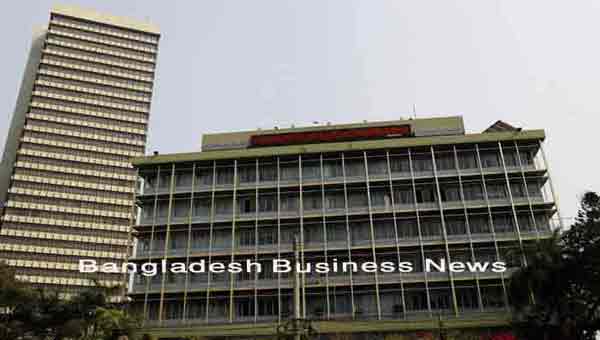

Bangladesh Bank Headquarters
Dhaka, Bangladesh (BBN)- The central bank of Bangladesh has intensified its monitoring and supervision to assess the real situation in the country’s foreign-exchange market through scrutinising banks’ statements.
As part of the latest moves, the Bangladesh Bank (BB), the country’s central bank, started scrutinising the foreign-exchange inflow and outflow statements of each bank on Thursday, according to officials.
The BB’s Forex Reserve and Treasury Management Department (FRTMD) sat with senior officials of five commercial banks to get to know their statements, submitted to the central bank earlier.
Talking to the BBN, an executive director of the BB said the central bank has started scrutiny of such statements to get to know the utilisation of funds by the bank concerned.
The executive director also expects that such scrutiny of the statements will be completed by the next week.
During meetings with the bankers, the central bank officials also examined the use of funds, which were purchased from the central bank to settle import payment obligations, he added.
“We had collected such statements for the last four months from our ‘dashboard’,” another BB official said while replying to a query.
The central bank earlier launched an electronic system, generally known as ‘dashboard’ for monitoring all kinds of foreign exchange transactions aiming to check fraud and forgery in the country’s banking sector.
The dashboard provides summary of export, import, inland back to back letter of credit (LC), inward and outward remittance separately with categorically separated details.
The FRTMD will submit a report with possible market trend in the upcoming months after completing such scrutiny of the statements to the higher authorities concerned, the official added.
The market operators, however, said that the demand for the US dollar is increasing gradually, mainly due to higher import payments pressure, particularly of capital machinery, petroleum products, and consumer items including food grains.
Bangladesh’s overall imports grew by 13.39 in the first eight months of the FY 2017-18, mainly due to higher import of food grains, industrial raw materials and fuel oils.
Actual import in terms of settlement of LCs rose to US$ 33.84 billion during the July-February period in the FY 18 from $ 29.84 billion in the same period of the previous fiscal, the BB data showed.
BBN/SSR/AD